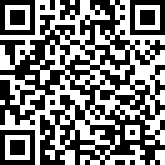- Tesla worker claims factory robot struck him, leaving millions in medical expenses.
- Lawsuit seeks $51 million, alleging negligence and unsafe equipment placement.
- According to the employee, Tesla has refused to show him footage of the incident.
An accident at Tesla’s Fremont factory has led to a $51 million lawsuit, with one employee claiming he was left with grievous injuries and millions in medical bills after being struck by a production-line robot. The case raises some questions not just about workplace safety but also about the role of automation in high-pressure manufacturing environments.
According to court documents seen by The Independent, 50-year-old employee Peter Hinterdobler was injured on July 22, 2023, while helping an engineer disassemble a large robot from the Model 3 production line. After attempting to “remove the motor at the base of the robot in order to access its internal dress pack,” the robot’s arm struck Hinterdobler with “the force of an approximately 8,000-pound counterbalance weight,” says the lawsuit.
A Violent Impact
The worker was thrown to the floor and lost consciousness. The lawsuit states that he has already accumulated $1 million in medical expenses and expects another $6 million in future costs. On top of that, he is seeking $20 million for pain, suffering, and inconvenience, $10 million for emotional distress, $1 million for lost wages, and $8 million for diminished earning capacity.
The filing also claims that the robot had been placed in an “area not designated for such equipment,” and that Tesla had “implemented new rigging and safety protocols specifically related to the…robot involved in [the] injury.” Alongside Tesla, robotics manufacturer FANUC is named in the lawsuit.
Disputed Safety and Missing Footage
Hinterdobler’s lawyers say Tesla has refused to provide video evidence of the accident. The company is also accused of “failing to ensure that the robot was safely de-energized, secured, and stable before allowing [Hinterdobler] to assist with the disassembly process.” FANUC is separately accused of “negligently” designing the robot and of failing to properly instruct users about its safe operation.
According to the report, so far, neither Tesla nor FANUC has taken the step of filing a formal response to Hinterdobler’s allegations.
The case is still in its early stages, but it points to the uneasy reality of mixing humans with industrial robots, where safety rules tend to be noticed most after something goes wrong.
